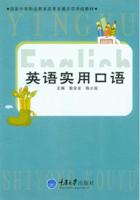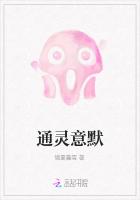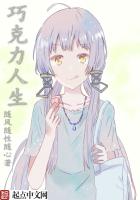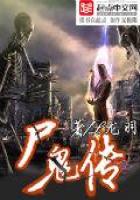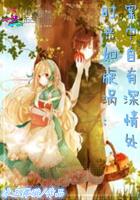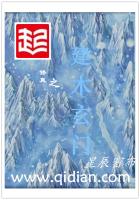This binding method was called “whirlwind binding” because of the circular movement of the page, which is like a whirlwind. When the book is unfolded, pages are arranged like dragon’s scales. Therefore, it is also known as “dragon’s scale” binding. Wang Renxu’s Kanmiu Buque Qieyun, a manuscript from the Tang Dynasty collected in the National Palace Museum is a representative of whirlwind binding.
Album leaf
From the late Tang to the early Song, printed books gradually replaced manuscripts, and album leaf also replaced the scroll system.
Album leaf refers to binding several single leaves into a volume suitable for printing. The earliest album leaf system was butterfly binding, which evolved into wrapped back binding and then stitched binding. When machine based printing was introduced, binding gradually moved to paper and hard-cover binding.
Butterfly binding
The name butterfly binding emerged from its resemblance to a butterfly when the book was spread out. It was the main layout system used during the Song Dynasty. In butterfly binding, two pages were printed on a sheet, which was then folded inwards. The sheets were pasted together at the fold to make a codex with alternate openings of printed and blank pairs of pages. A hard cover (sometimes coated with cloth or silk) was made. In appearance, it looked like a modern paper or hardcover bound book and the shape of the leaves and the manner in which the book opened and closed resembled the wings of a butterfly.
Wrapped back binding
In wrapped-back binding, pages are folded the opposite way round. Each sheet of paper was only printed on one side but, after folding, the wood block print would appear on the “outside” rather than the “inside” of the folio. These folios were then piled up on top of each other so that the open ends, instead of the edges, came together to form the spine. Wrapped-back binding appeared during the late Southern Song dynasty and remained in practice after the 16th century. The famous Yongle Encyclopedia is an example of a wrapped back edition.
Stitched binding
Stitched binding first appeared in the 16th century. It developed from wrapped back binding. The wood block print would appear on the “outside” rather than the “inside” of the folio. Each group was made up of two or more sheets of paper joined together with thread at the fold. The spines of each of the gatherings are sewn together. The spines of the gatherings are brought together to form the book.
Usually four holes were made on a stitched bound book and such editions were called “four needle eye editions.” For larger books, two more holes were punctured. These were called “six needle eye editions.” Sometimes thread or silk were used to bind the two corners up and down to protect the books and make them look nice. Such books were called “corner wrapped editions.” Another kind of stitched book was called “rough editions” because the pages were not cut to be identical in size after the holes are made. Stitched books are easy to read, durable and practical. This type of binding is still used today for copies of ancient book using deckle edged paper or rice paper, which gives them a simple and elegant look.
The appearance of stitch binding represents the last phase in the history of traditional Chinese bookbinding. After the 18th century, machine based printing gradually adopted the appearance of paperback and hard cover books.
Layout of printed edition
All woodblock printed books are printed on one side of the page only and each page has a certain format. Usually a single page format includes layout, boundary box, boundary line, core, fish tail, trunk, head, foot, ear and so on.
Typeface: The area of one type.
Type frame: Black lines around a typeface are also called boundary lines. A single line frame is called a single boundary line while a double line frame was called double line boundary. The boundary was usually thicker outside and thinner inside.
Boundary line: Lines to mark outlines, lines painted with black, red and blue ink are called “black thread line,” “red thread line” and “blue thread line,” named thanks to the thin boundary line.
Head and foot: The upper part outside a typeface is the head. The bottom is the foot.
Heart: A narrow line in the centre of the typeface.
Fish tail: A graphic resembling a fish tail at about a quarter of the way to the centre of the heart. The fish tail divides the heart into three parts. The centre is for the title, number of volume and page number. The upper part for the page number and later book title, sometimes the publisher’s name also appears here. The lower part for the type carver’s name and, later, the publisher’s name or name of the book series.
Trunk: The part between the fish tail and the frame. The trunk printed with black lines was called “heikou.” It is called “xi heikou” if the line is thin and “cu heikou” if it is thick. In the absence of line or character, it is called “baikou.”
Ear: Small box at the upper part of the boundary lines, usually for the name of the passage.
Structure of printed edition
The appearance of an ancient book includes the book clothes, book mark, protection page, cover page, book spine, book mouth, book brain, book head, book root and wrapped corner, and so on.
Book clothes: Now called the cover, usually made using colored hard paper to protect the book, hence the name.
Book mark: Paper mark used to write the book title and pasted on the book clothes, usually inscribed by celebrities or teachers. Protection page: Also called title page, it is a blank page inside the book.
Cover page: Cover in ancient times referred to the first page after the protection page. The title was written on it, usually by someone famous.
Book spine: One end of the binding, also called book back.
Book mouth: The opposite side of the spine.
Book brain: Places where holes are punched for thread to go through. In modern hard-cover editions, the places where staples go into are also called the book brain,
Book head: Refers to the cut on the top.
Book root: Refers to the cut at the bottom.
Wrapped corner: Corners wrapped with silk, to protect the book and also make it look neat.


